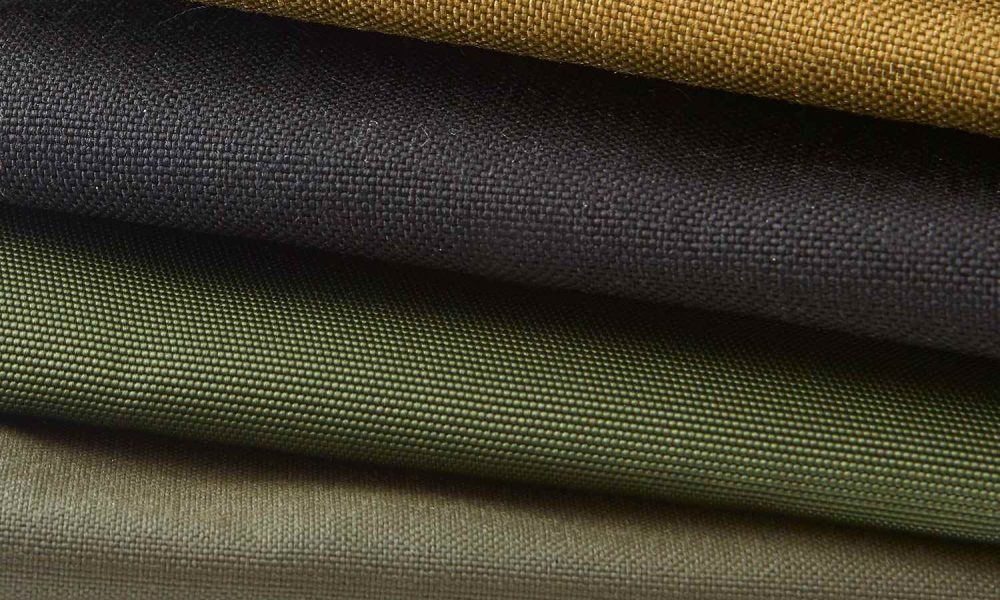
The technical and military textile in Portugal
Interview with Gilda Santos – Protection & Defence Area Manager at CITEVE
GILDA SANTOS – Currently Protection & Defence Area Manager at CITEVE (Centro Tecnológico Têxtil e Vestuário) Textile and Apparel Technology Center. Gilda Santos coordinated different influential Portuguese and European product research and innovation projects, in the technical textile field and the textile production for the military sector.
1) In the technical textile world, of protective and functional clothing, and work garments, the timing to develop a product are very different to the fashion-textile: you work over long timescales with significant investments. What are the most interesting and innovative projects that you followed in recent years?
In recent years I have worked in several interesting projects for both civil and military sectors. Regarding the civil sector, I would like to highlight some personnel protective equipment for work and sports, namely Seab2 (clothing system with integrated inflation for sea work and sports practice), Golf jacket (smart multifunctional jacket with passive an active heating system and presenting water and dirty repellence, UV protection and anti-mosquito for golf players), ColdFit Moto (motorcycling protective suit with improved high visibility through led technology, improved thermal insulation and reinforced impact zones), STORM System (water proof, active heated storm shelter for adverse weather under urban caos condition, autonomous lighting and heating integrated system).
For the military area I was involved in three interesting Feasibility Studies of Combat Equipment for Dismounted Soldier (CEDS) funded by the European Defence Agency: ACCLITEXSYS (Stabilizing body temperature), ACAMS (Adaptive camouflage) and LIVEST (Lightweight ballistic protection).
ACCLITEXSYS (ACCLImatisation TEXtile SYStem) was focused on military thermal comfort with the goal of developing a smart acclimatisation textile system. Potential active and passive technologies that can act as temperature regulators (heating and cooling) through monitoring and responding to the soldier’s body needs, considering different environmental conditions were analysed and the most promising were selected for the development of the acclimatisation textile system: Active Fan Cooling, 3D Textile Structures, Thermoelectric Heating/Cooling (Peltier elements) and Heating Elements.
ACAMS (Adaptive CAMouflage for the Soldier) aimed to study methods for camouflage, concealment with adaptation to the operating environment and different scenarios. The focus of this project was on avoiding the detection and identification of the soldier by enemy sensors and recognition by electromagnetic radiation at different wavelengths. After the analysis of different textile technologies, an equipment based on an inflatable and reversible poncho with application of thermochromic pigments, adaptive in the range of the visible and infrared spectrum, was developed and produced as a proof of concept.
LIVEST (uLtralIgtht weight bullet-proof VEST) main objective was to develop a soft ballistic protection with significant 3D structures of Raschel technology, to reduce weight and minimize the trauma of the impact of a projectile on the user. In fact, the impact of a projectile can cause trauma and even drop the wearer of ballistic protection vests, causing different degrees of damage, so it is very important to minimize its effect. The scope of this feasibility study was based on the development of lightweight ballistic protection.
More recently I worked on two projects under the Preparatory Action on Defence Research (PADR): ACAMS II (Adaptive Camouflage for the Soldier II) and VESTLIFE (Ultralight modular bullet proof integral solution).
ACAMSII follows on from its predecessor ACAMS and aimed to develop adaptive camouflage to protect the soldier in military conflicts that occur in a multinational context in various types of environments. Adaptive camouflage mechanisms, namely thermochromics, LEDs, PCMs, radar absorbing elements, among others were studied to achieve multispectral signature management.
VESTLIFE aimed to develop a new integral solution anti-ballistic, lightweight and modular, which also included a CBRN detection system. The protective clothing presents a greater coverage area, maintaining comfort, in addition to a reduction in the weight of the ballistic panels, thus ensuring the ideal balance between protection and comfort, in a modular way to provide the possibility of adapting the protection to the mission risk. Additionally a new design for optimizing gender issues regarding ballistic hard plates was developed taking into account an anthropometric study carried out with Portuguese military subjects about the most predominant type of female and male bodies. Technologies as computer aided design, 3D body scanners and additive manufacturing were used.
I want to highlight also STILE, an OB study launched by EDA dedicated to “Smart textiles in defence: looking at the soldiers of the future”, aiming at integrating different functionalities related to the field of smart textiles into a single smart combat system. Main functionalities considered for the proof of concept are signature management, monitoring of environmental parameters and CBR threats, flame retardancy, water and dirt repellence and anti-mosquito solution, physiological monitoring, self-thermoregulation (heating and cooling), communication and wireless exchanging data. Smart textiles technologies such as technical embroidery and printed electronics for integration of electronic components in textiles, seamless knitting for achieving a body mapping patchwork of several structures with different functionalities and specific innovative textile finishing processes were studied and developed to achieve simultaneously ergonomics, mobility, homogeneous distribution of weight, lightness, flexibility, comfort, freedom of movement and functional properties.
And last but no least, I was involved in two projects for the Portuguese Army: SCS (Soldier Combat Systems) Survivability domain and ACU (Advanced Combat Uniform). These projects aimed to protect the soldiers against multiple risks associated to different environmental conditions, using innovative technologies and new materials providing flexibility, comfort, increased protection and other relevant features by developing novel uniforms (underwear set, combat uniform, waterproof set, daily uniform), tactical pack systems (assault rucksacks, hydration system and first aid bag) and boots among other equipment’s. The new multicam camouflaged pattern was developed to increase the soldier’s operational performance. To achieve the solutions, CITEVE worked with a group of highly specialized Portuguese companies namely DAMEL, RIOPELE, ASAMPAIO, ICC LAVORO, INEGI and MONTE CAMPO and in close cooperation with the Portuguese Army.
2) The textile production for the military sector represents a growing market, and the Russian war in Ukraine is determining important investments for the defensive purpose by the European Union. How have military textiles changed over the years, and what are the most innovative projects and studies regarding the clothing of soldiers and military today?
Over the past years textile has played a vital role in providing protection to certain extent to the soldiers. Up to now, we could see many developments in the field of providing protection in all forms to the soldiers. Beginning with the use of natural fibers for providing protection on the war field (these were very heavy and bulkier) and gradually introducing the use of high-performance fibers in the textiles used for defence. Even though there are many developments in this field, it is very difficult to provide all the required functionality in a single garment, it must be provided through layers of materials. Looking over the years, we can understand the path travelled by the protective garments provided to the defence personnel, starting with the heavy metal gears used by the soldiers of the past to today’s lightweight armors. Due to the technological evolution observed in recent years, nowadays it is very common to associate textiles with electronic components, with the aim of broadening the spectrum of functionalities/properties of textiles. However, although the integration of these two components is already a reality, these two areas (textiles and electronics) are often seen as distinct areas, especially about standardization. Smart textiles, also called e-Textiles require a knowledge of textile design and technology, of chemistry, physics, electronics and computer science but greatly enlarge the possibility for innovative solutions. Some relevant study areas for the military textiles and clothing are:
-Environmental protection – The military forces have to work in all parts of the globe, in a wide range of environmental conditions, like rain, snow, fog, wind, lightning, sunlight, dust, heat, cold, wet, high UV areas, and wind-chill.
-Thermal insulation – working in cold/dry conditions like Arctic and Antarctic, and other mountainous regions of the world implies to carry clothing, sleeping bags, personal equipment with high levels of thermal insulation.
-Water vapour permeability / water proofing – In extreme war operations facing harsh climatic conditions or intensive activities it is mandatory to wear waterproof breathable fabrics to avoid injury or death due to hypo/hyperthermia.
– Camouflage concealment and deception – should be effective in all the wavebands of detection used by the military forces (UV, near IR, far IR, …).
-Flame retardant heat protection – military can face deliberately planned events presenting flame and heat threat, open flames, radiant weapon flash, exploding munitions, toxic fumes.
-Ballistic protective materials – ballistic protective materials are not to just stop the speeding bullets but to protect the military from fragmenting devices as well, i.e. form grenades, mortars, artillery shells, and improvised explosive devices.
-Impact protection – high-performance apparel should protect against high energy impacts without sacrificing flexibility, breathability or ease of use.
-Biological and chemical protection – toxic agents are insidious mass destruction weapons that cause emotional and lethally horrific effect.
-Monitoring vital signs, activity levels and sending alerts – the first smart textile project called “Wearable Motherboard” was developed in 1996 by the Georgia Institute of Technology (USA) for the NASA. It was a uniform composed of optic fibers which enabled the transmission of information on the health status of a soldier in a hostile environment.
3) The technical textile sector – and the textile sector more generally – what weight does it have today in the Portuguese economy? What is the situation of the textile industries in Portugal and how is the sector evolving in the face of today’s complex international scenarios?
Today textiles are everywhere – from the clothing we wear, cars we drive, and furniture we occupy to the roads we travel, bandages we use to heal, and structures that shelter us for protection, each fabric should be carefully selected for its unique construction and properties. Technological advances are the basis of the innovative products even if some are still facing problems of acceptability and technical stakes connected with their lack of maturity. In fact, technical and smart textiles take use of multiple disciplines such as electronics, chemistry or computing and approach various markets like protection, military, health, sports, transportation, construction, furniture, fashion) and target specific consumers (from newborns to seniors). The Portuguese sector is approaching all these markets which enlarge the commercial possibilities.
The textile sector weight, according with data from the Associação Têxtil e do Vestuário de Portugal (ATP), represented 9% of the national exportations (2020/2021) reaching 5,4 billion euros (4% higher than 2019). Concerning the number of employees, the sector comprehends 140 thousand workers, approximately 18% of the transforming industry. The positive results are due mainly to the development of innovative textiles and products, manufacturing of high added value products, high quality and commitment with sustainability. Digitization, industry 4.0 and circular economy are important factors together with a strong resilience. To highlight what happened when COVID-19 appeared with the huge need of masks and other PPE. The entire sector started immediately to search for technical information and expertise to develop materials and protective equipment to face the cancellation of the usual production.
Currently, the complex international scenarios are bringing new challenges and creating a difficult situation regarding the production costs with special focus on energy, logistics of raw materials supply chain among others, so new demands for resilience, innovation and persistence …
4) In your opinion, what could be the most significant innovations in the world of technical fabrics and functional clothing in the future? And if you had a magic wand, what would be the invention you would like to create to improve fabrics and clothes?
For me the defence sector is one of the most demanding and looking for innovative solutions. In view of the countless and varied adversities to which the dismounted soldier is currently exposed, there is an urgent need to develop innovative technical and protective equipment to respond to the real needs that arise in the theater of operations. In this way, advanced and digitalised smart textiles present several innovation opportunities for smarter, safer and faster military performance, namely:
- Improve protection against natural and battlefield threats;
- Maintain thermo-physiological comfort or survival in extreme conditions;
- Improve compatibility between and within different clothing components;
- Reduce weight and bulk of materials;
- Integrate functionality so that fewer layers provide multi-layer protection;
- Create emitters that can send data and receivers;
- Develop fibers that can act as batteries;
- Develop textiles that can monitor heart rate, track the physiological condition, dispense medication, and even transmit immediate notification if the wearer of the textile were to fall;
- Develop color-changing fibers for camouflage concealment and other properties;
- Reduce life cycle costs by making systems more effective, durable (reducing maintenance costs) and recyclable and by buying few components in the system.
Simultaneously, smart textiles can contribute to the EU’s transition to a climate-neutral circular economy in which products are designed to be durable, reusable, repairable and recyclable. As technology advances, there will be a growing demand for more sophisticated and smarter textile products.
And if I had a magic wand I would create a very special suit for the dismounted soldier – a suit that make the soldier invisible and at the same time providing protection against natural and battlefield threats, providing thermo-physiological comfort or survival in extreme conditions, self-powering with sensing, monitoring and acting for good physiological condition preservation.

